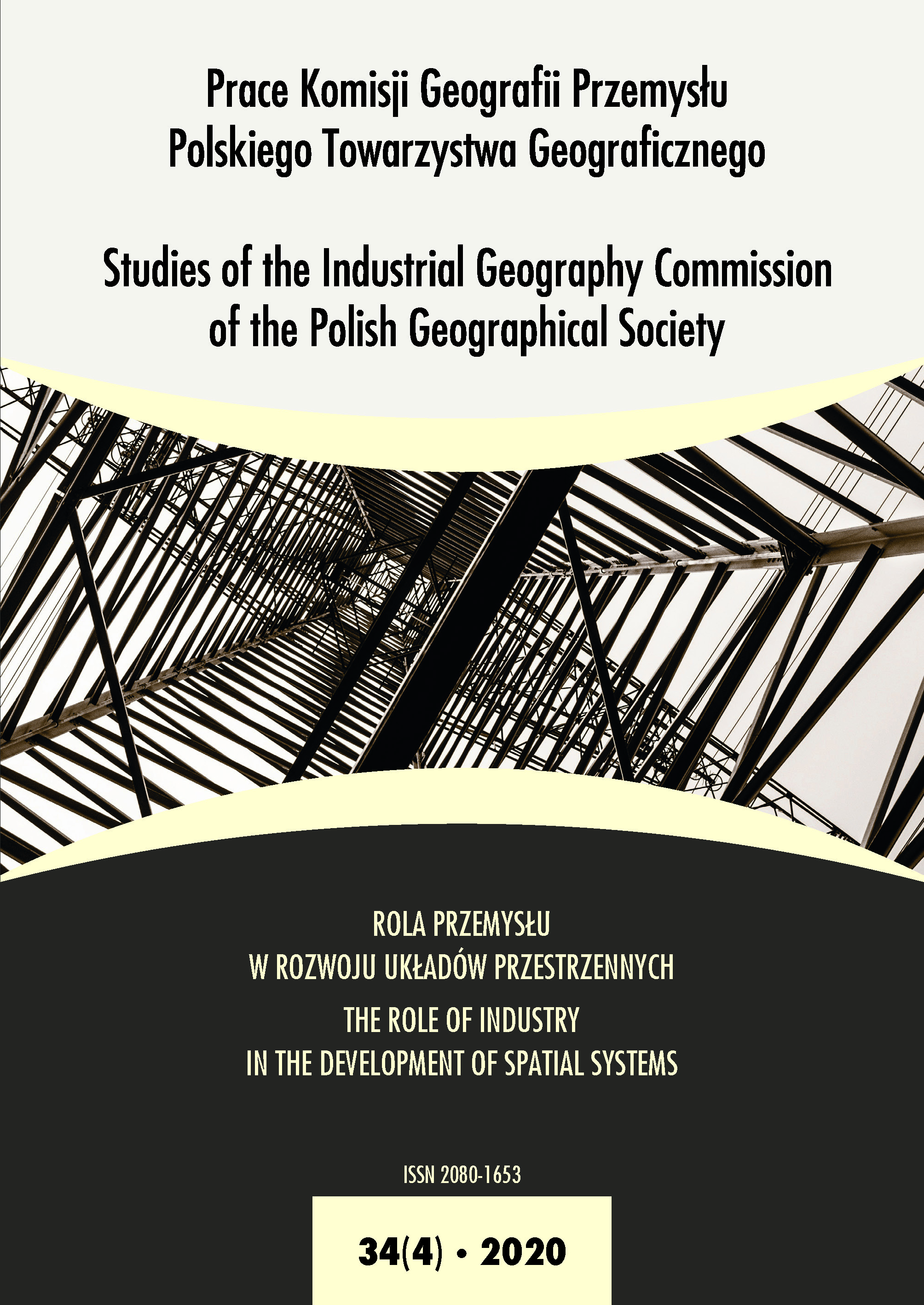Structural changes in the manufacturing sector as an effect of implementing the concept of Industry 4.0
DOI:
https://doi.org/10.24917/20801653.344.7Keywords:
employment, industrial robots, Industry 4.0, manufacturing, structural changesAbstract
The purpose of the study is to identify changes taking place in the employment structure within NACE ‘Section C - Manufacturing’ which accompany the implementation of the Industry 4.0 concept. The spatial scope of the analysis covers seven EU member states, i.e. Czechia, Germany, Poland, Slovenia, Slovakia, Romania and Hungary. The time range includes the years 2011-2018. All the new technologies that make up Industry 4.0 accelerate industrial transformation processes, additionally transforming the labour market, business management methods and the structure of the goods and services market. The main foundations of the Industry 4.0 concept include automation and robotics, which are increasingly implemented in new areas of life. The fastest-growing market is that for industrial robots which are used in enterprises more and more often and directly affect labour demand. Most industrial robots are used in the manufacturing of motor vehicles, trailers and semi-trailers, excluding motorcycles (Division 29) with Germany and Czechia being leaders in their use. The analysis shows that an increase in robotisation reduces the demand for work for the young, and this only increased in countries that present a low robotisation rate and outdated manufacturing activity.
Downloads
Metrics
References
Bartosik, K. (2013). Zmiany strukturalne i koniunkturalne a zatrudnienie w polskim przemyśle przetwórczym. Gospodarka Narodowa, 9, 91–112.
Berger, R. (2016). The Industry 4.0 transition quantified. How the fourth industrial revolution is reshuffling the economic, social and industrial model. Monachium: Roland Berger GmbH.
Brynjolfsson, E., McAfee, A. (2014). The Second Machine Age. Work Progress, and Prosperity in a Time of Brilliant Technologies. Nowy Jork: W. W. Norton & Company.
Grabowska, M. (2018). Przemysł 4.0 w Unii Europejskiej. Studia Europejskie – Studies in European Affairs, 3, 257–279.
Gracel, J., Rodak, A. (2019). Transformacja do przemysłu 4.0. Harvard Business Review Polska. Retrieved from: https://www.hbrp.pl/b/transformacja-do-przemyslu-40/PiYIsMRNo.
GUS. (2019, November 20). Pojęcia stosowane w statystyce publicznej. Retrieved from: https://stat.gov.pl/metainformacje/slownik-pojec/pojecia-stosowane-w-statystyce-publicznej/2061,pojecie.html.
Hermann, M., Pentek, T., Otto, B. (2015). Design Principles for Industrie 4.0 Scenarios. A Literature Review, Working Paper, 1. Technische Universität Dortmund Fakltät Machinenbau.
IFR. Executive Summary World Robotics. (2019). Retrieved from: https://www.ifr.org/downloads/press2018/Executive%20Summary%20WR%202019%20Industrial%20Robots.pdf.
Kuźnar, A. (2017). Udział Polski w globalnych łańcuchach wartości. Horyzonty Polityki, 22(8), 49–67.
Lee, J. (2013). Industry 4.0 in Big Data Environment. German Harting Magazine, 8–10.
Łapiński, K., Peterlik, M., Wyżnikiewicz, B. (2015). Wpływ robotyzacji na konkurencyjność polskich przedsiębiorstw. Warszawa: Instytut Badań nad Gospodarką Rynkową.
Mosconi, F. (2015). The new European industrial policy. Global competitiveness and the manufacturing renaissance. London: Routledge Taylor & Francis Group.
Nosalska, K., Śledziewska, K., Włoch, R., Gracel, J. (2019). Wsparcie dla Przemysłu 4.0 w Polsce. Prototyp narzędzia oceny dojrzałości cyfrowej przedsiębiorstw produkcyjnych. Warszawa: DELab UW; Ministerstwo Przedsiębiorczości i Technologii.
Pascual, D.G., Daponte, P., Kumar, U. (2020). Handbook of Industry 4.0 and SMART Systems. Boca Raton: CRS Press
Przemysł 4.0 czyli wyzwania współczesnej produkcji. (2019, November 5). Retrieved from: https://www.pwc.pl/pl/publikacje/2017/przemysl-4-0.html.
Rachwał, T. (2010). Struktura przestrzenna i działowa przemysłu Polski na tle Unii Europejskiej w dwudziestolecie rozpoczęcia procesów transformacji systemowej. Prace Komisji Geografii Przemysłu Polskiego Towarzystwa Geograficznego [Studies of the Industrial Geography Commission of the Polish Geographical Society], 16, 105–124.
Rüßmann, M., Lorenz, M., Gerbert P., Waldner M., Justus J., Engel P., Harnisch, M. (2015). Industry 4.0. The Future of Productivity and Growth in Manufacturing Industries. Boston: Boston Consulting Group.
Weissbuch Arbeiten 4.0. (2017). Berlin: Bundesministerium für Arbeit und Soziales.
Wittbrodt, P., Łapuńka, I. (2017). Przemysł 4.0 – wyzwanie dla współczesnych przedsiębiorstw produkcyjnych, In: R. Knosala (ed.), Innowacje w zarządzaniu i inżynierii produkcji (2). Opole: Oficyna Wydawnicza Polskiego Towarzystwa Zarządzania Produkcją, 793–799.
Downloads
Published
How to Cite
Issue
Section
License
Articles are published under the terms of the Creative Commons License (CC BY-ND 4.0; Attribution– NoDerivs).

